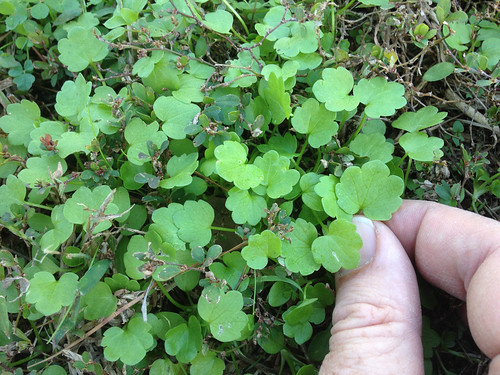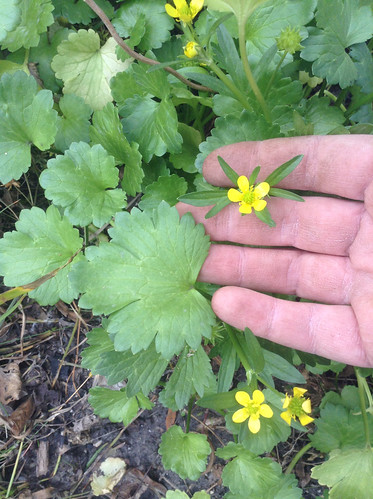Abundance: common
What: leaves
How: raw
Where: moist, disturbed areas, yards, fields
When: winter, spring
Nutritional Value: assorted vitamins
Dangers: beware the mimic creeping buttercup
Close-up of leaves. Note the five major leaf lobes.
Hoary bowlesia grows in a rosette pattern with all the stems originating from a central point.
This weed begins appearing in winter and continues on into spring. It thrives along sidewalks and other urban environments.
Close-up of horay bowlesia's tiny flowers. Note the hairiness of the leaves.
Texas distribution, attributed to U. S. Department of Agriculture. The marked counties are guidelines only. Plants may appear in other counties, especially if used in landscaping.
North American distribution, attributed to U. S. Department of Agriculture.
Hoary bowlesia is one of those native "weeds" that many people see but few know. Its light-green, five-lobed, hairy leaves begin popping up along sidewalks and in yards after several cool, winter rains. In many ways it resembles the toxic creeping buttercup (Ranunculus repens) which also grows in similar locations and time but the creeping buttercup has smooth, hair-free leaves whereas hoary bowlesia is covered in fine hairs.
If you think the leaves resemble cilantro somewhat you have a good eye. Both cilantro and hoary bowlesia are members of the Apiaceae family aka the carrot family and the leaves do have a flavor somewhat like mild cilantro. These leaves can be used raw as a salad green or seasoning or cooked as a traditional pot herb. This is a plant who's flavor will depend a great deal on your own major taste buds and the specific plant compounds that register the most strongly. If you're the type of person who really dislikes cilantro I still recommend giving hoary bowlesia a small test-nibble. I haven't heard of any reports of it containing the soap-like molecules that some people find disagreeable so you may like it.
Young, toxic Creeping Buttercup. The leaf shape is similar but these leaves are hairless.

Mature, toxic Creeping Buttercup produces yellow flowers.









